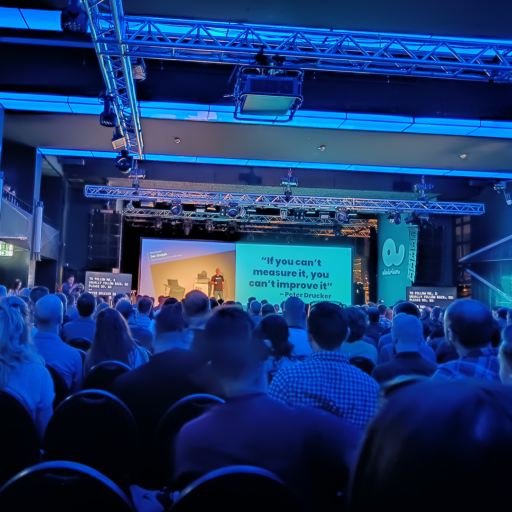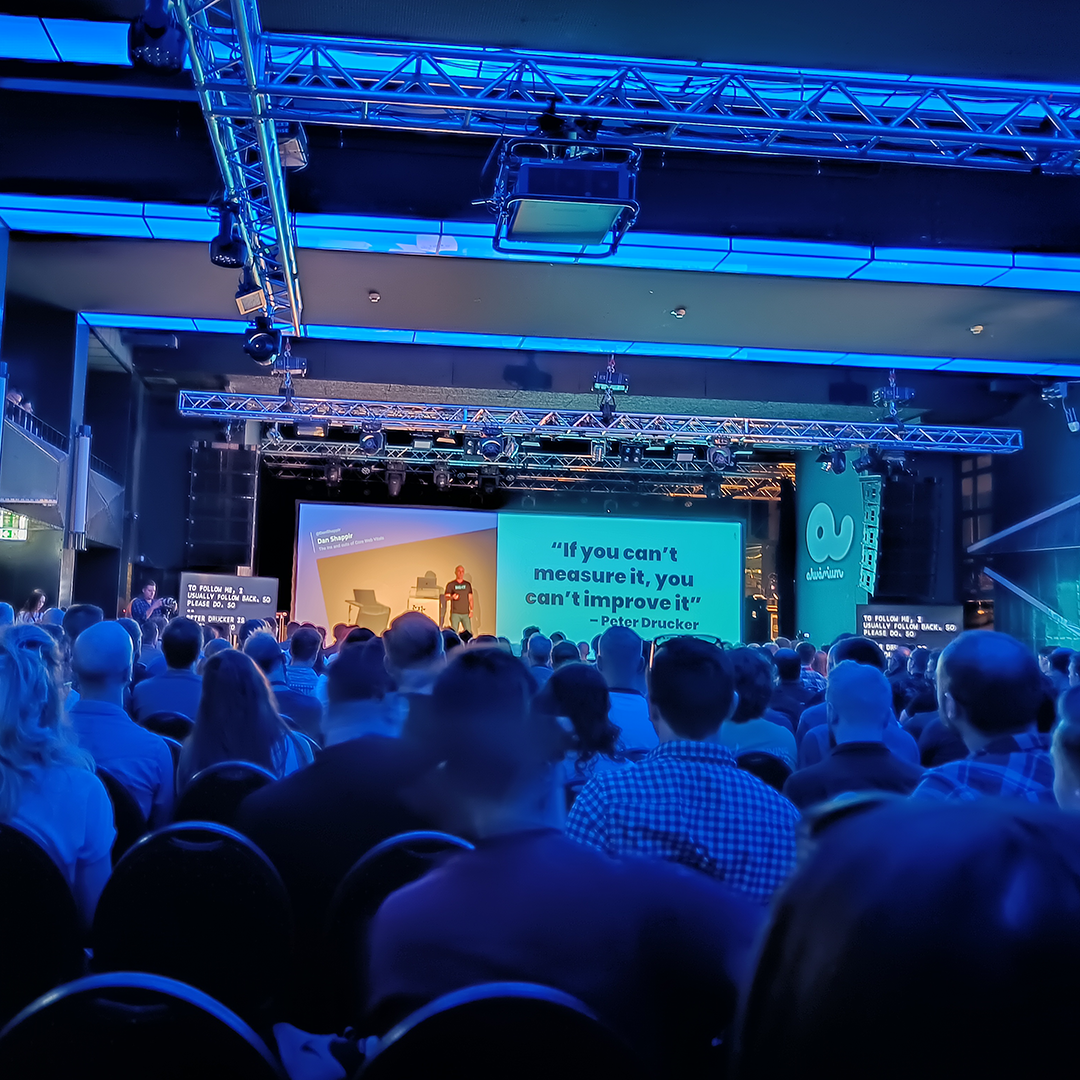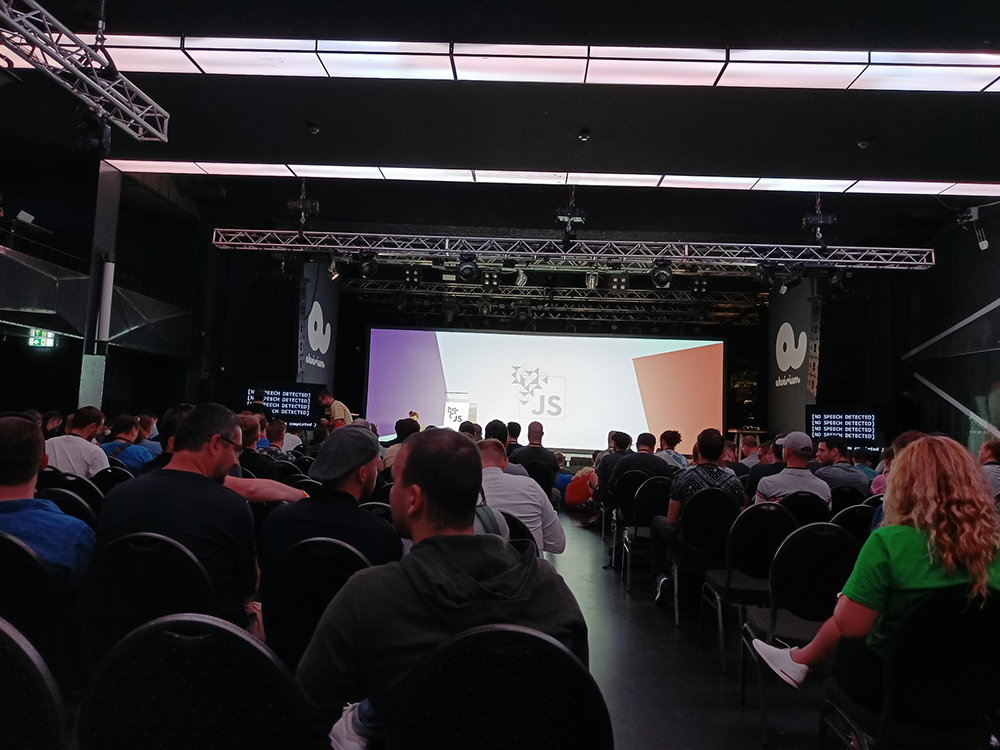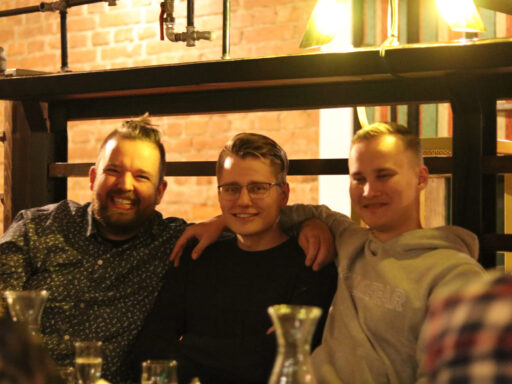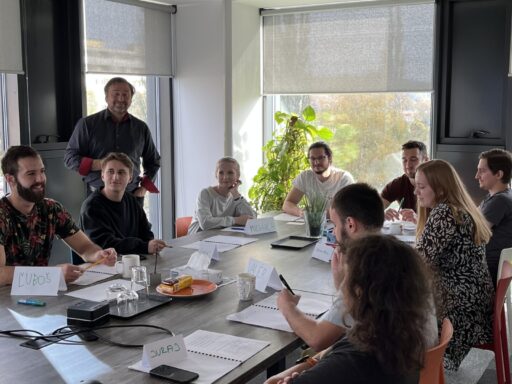How sad was the covid IT world without interesting conferences! And how happy we are (Ady and Mišo) that we could go on a 3-day educational team building trip to JSConf in Budapest.
JSConf is a fairly well-known event that has been taking place in various places around the world for several years. As the name implies, it’s a conference focused on web development, especially JavaScript.
The development conferences we have attended can no longer be counted on our fingers, perhaps not even our toes. There were just a lot of them. Some better, some worse. This one was one of the better ones. It was excellently organized, in a beautiful Budapest place (Aquarium Club), surrounded by a park, lawns and smiling people. It was marked by tolerance, multiculturalism and respect among people. Not that it was anything special, but here you could somehow feel the decency, respect and humility more. Maybe because it was something special for everyone, something that we all appreciate a little more after covid and endless lockdowns.
What did we like?
Variety of lectures (22 in 2 days!) with speakers from all over the world who were able to keep our attention because their lectures were not necessarily about programming. Most of the time, technical lectures were alternated with non-technical ones, “psychological” ones, they were short, 20-30 minutes long and about very balanced topics.
They were all worth it. For example, we learned right at the beginning why JavaScript doesn’t have types yet and why it may take 5 years to have them. And these types are not supposed to replace TypeScript, they’re supposed to be compatible with TypeScript. But all we know today is that time will tell. The new standard of ECMAScript is simply so… lengthy… as explained to us by Gil Tayar (@giltayar) ?
The lecture by Nils Binder, who showed us an analogy with today’s frontend programming on a beautiful example of historical painters, came right after.
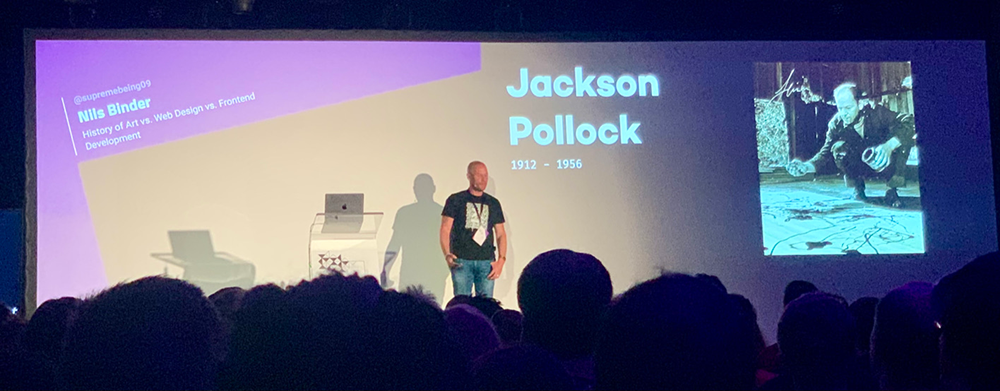
It was followed by a perfectly timed CoffeeBreak and immediately after we watched with amazement the lectures on how to become a better developer. Or how to activate and use modern voice recognition methods in our favor. From this particular one, we’ve taken the main idea:
It’s still easier and faster to get up and turn the switch off than to say: “Hey Siri, turn the light off in the living room”.
Therefore, it’s necessary to choose an application very wisely.
Sarah Saunders showed us in 30 minutes how to make Amazon Alexa a psychologist who, based on the answers to prepared questions, analyzes and assigns the user’s personality to the Frontend, Backend, Fullstack group… By the way, of all the speakers, Sarah had the most beautiful English with the most beautiful accent, and we understood her best. No wonder, she’s from royal England.
And the lunches!
In addition to being well organized and no one waiting for lunch for a long time, they were also exceptionally tasty – quinoa, bulgur, mango, chickpeas, ginger, flax, chili – at least something that we were able to identify in the taste. Yummy :-).
Lectures on why Code Review is important followed. We know that even without a lecture, but for example I (Mišo) didn’t know that it’s better to do it without context. And they even proved it to us scientifically. We finished the day exhausted in a Mexican restaurant and looked forward to Friday.
It carried a motif of lectures and the necessary accessibility of websites. About correct and semantic code. About tolerance towards disabled web users. And it’s not a negligible percentage. Developers, please, let’s not forget this.

Finally, we all thought about this: How does the size of the bundle affect the climate? Believe me, it does. And not just a little. It’s in our hands.
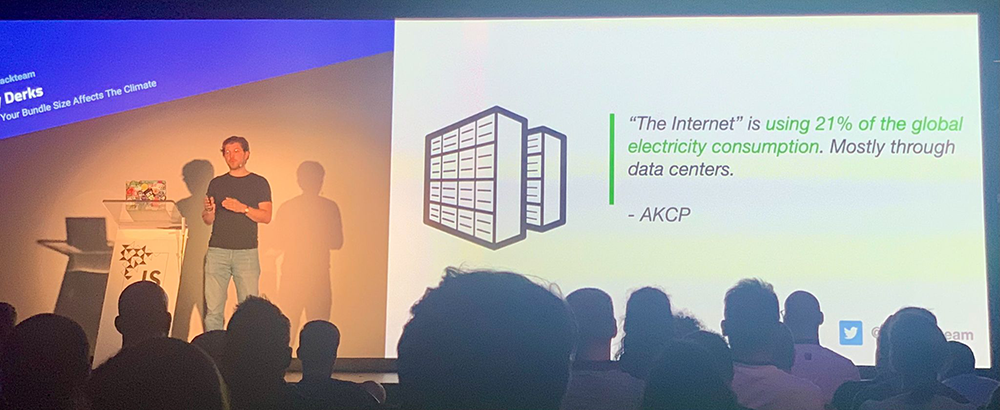
Tired, we shuffled to the hotel parking lot, had an Ikea hotdog and set off on our way home. We’re very grateful for this experience and opportunity. In conclusion, perhaps only one thing:
JavaScript is not a programming language. JavaScript is a community.
And that was indeed felt at this conference, in sunny Budapest, among equally wacky people. And that’s why we had such a good time.
What interested us the most?

For me, it was definitely Nhlanhla Lucky Nkosi from South Africa who came with the most interesting lecture, showing us “How to destroy a working drone”. It was about how to control, and ultimately break a drone in different ways, leaving out the classic controller in the first place. He began lightly by using a web-based application with buttons, he continued with motion sensors until he got to control the drone using bananas linked to Arduino. In short, he used them as sensors and when he touched them, the drone did certain tasks.
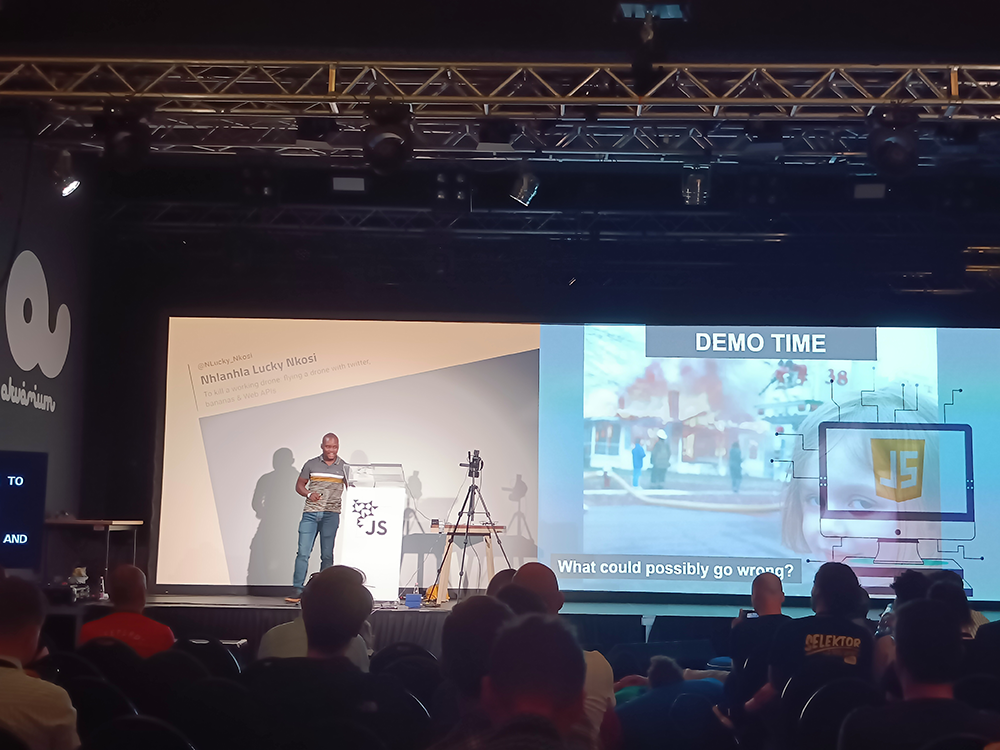
Perhaps most of you will say that it’s a simple and, above all, useless thing. Well, that’s what I got from JSConf.
As developers, we should always learn new things, and this is exactly the fun way to broaden our technical outlook, regardless of whether the thing we work on in our free time is of any benefit to the outside world or not.
It was in this spirit that much of the conference was carried and it gave me a lot.

An excellent lecture, which probably captured me the most on Friday, was about javascript generators. Did you know that a generator can not only give, but also take? That it actually serves as some sort of code execution pause? Developer Anjana Vakil from San Francisco showed us wonderful examples of asynchronous generators and also how it’s possible to break the protection of the operating system on the overflow buffer using generators.



